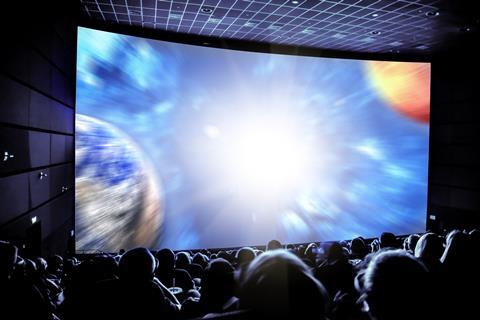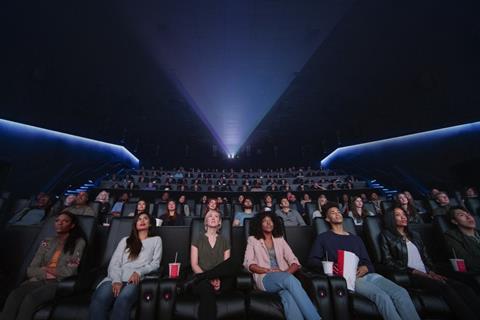Declining cinema attendance in Europe means that a greater focus on higher-resolution images and immersive technologies is inevitable, writes David Davies.

The last decade has arguably been the most erratic period in the history of modern cinema. Whilst there has been spectacular growth in some developing markets, long-established cinema regions such as the US and Europe have reported fluctuating visitor numbers.
In 2017, movie attendance in the US hit a 25-year low, whilst in the EU box office revenues fell by 3.3% in 2018. 2019 is hardly likely to be a milestone year either, with global ticket sales down by 6% in the first half of 2019, according to Box Office Mojo.
- Read more: 20 years of digital cinema
‘Franchise fatigue’ and a prevalence of sequels have surely played their part, but so has increased competition from on-demand and streaming media.
In this context, it’s not surprising that we have lately witnessed a wave of upgrades in which operators have sought to enrich and distinguish the cinema experience through the use of improved images and sound, as well as other technologies aimed at making cinema attendance more immersive.
From laser light projectors to 4K HDR to object-based audio, there is no shortage of devices by which to secure and retain customer interest.
However, most operators realise that technology is only one part of the mix. As such, there is now a greater focus on delivering a pleasurable experience from ticket purchasing to exiting the venue at the end of the screening. As Alain Chamaillard, head of cinema EMEA and CIS at NEC Display Solutions Europe, remarks: “The key to kickstarting a renaissance in cinema is to concentrate on making moviegoing a special experience again. Auditorium technologies like 4K and 3D are obviously important, but so is creating a unique experience throughout venues.”
‘Pin-sharp’ laser imagery
Acknowledging this period of change in the cinema industry, NEC showcased a raft of new products at CineEurope in June, including the new NC2402ML projector – described as the first cinema projector to integrate a modular laser light system with a projector head.
According to the company, the result is ‘pin-sharp laser imagery’, with the modular approach allowing cinema venues to plug-in the appropriate light modules based on the required brightness.
The product arrives during a period “when a lot of the [original projectors for digital cinema] purchased about ten years ago are nearing end-of-life, and so cinema operators are thinking about purchasing new equipment,” says Mark Kendall, business development digital cinema EMEA, NEC Display Solutions.
“3D can still be a great experience – if the content and the quality are good.” Mark Kendall, NEC Display Solutions
Although xenon lamps have been dominant to date, the improved brightness, greater colour space and extended longevity of laser projector heads mean that the latter are becoming more popular. Accordingly, NEC will continue its modular laser light developments with the expected introduction of a 4K projector head to join the existing 2K one in early 2020.
But to what extent does improved resolution actually encourage cinema attendance?
Kendall believes that “the scale of improvement” offered by 4K can be an important differential, although he is presently unconvinced by the prospect of 8K cinema and thinks that the dramatic increase in cost and file size attendant to that format means that its potential is limited “for now at least – but who knows what will happen in the future?”
- Read more: “Urgent need” for digital cinema standards
He is more optimistic about the outlook for 3D, but agrees that the volume of production has plateaued and suggests that poor execution in some facilities may be limiting its appeal: “3D can still be a great experience – if the content and the quality are good.”
Meanwhile, Kendall encourages industry observers to also pay attention to the quality of the facilities surrounding the screening room. With this in mind, the company has recently launched a number of high-quality large-format displays suitable for previews and trailers, reflecting the fact that “you need to have high-resolution images that portray the trailer in the right manner. That calls for 2K or 4K so it can properly complement the image [being shown in the screening rooms].”
Combined sensorial upgrades
Invited to consider whether recent improvements in audio and video mean that dramatic step-changes in quality are now more problematic, Dolby head of home content engineering Rob France says he thinks that “there is always more to do”. But in terms of Dolby’s objective of “getting as close to real-life as possible, we have made a major leap forward with Dolby Vision and Dolby Atmos.”

Dolby’s ability to provide multiple core technologies has helped to secure its continued eminence in the cinema market. More recently, its efforts have revolved around the Dolby Cinema concept that combines proprietary Dolby technologies as well as a number of signature design features. The primary technologies are Dolby Vision – which supports HDR, wide colour gamut and resolutions up to 4K – and Dolby Atmos, the object-oriented, 3D surround audio format capable of handling up to 128 discrete audio tracks and 64 unique speaker feeds. Dolby Cinema continues to record high-profile credits, including a recent project in Screen 1 at London’s Odeon Leicester Square (now renamed Odeon Luxe Leicester Square).
Like Kendall, France highlights the value of moving from xenon bulb to laser projector heads, noting that “the contrast ratio [achievable with Dolby Vision] is about 500 times that of what we might call standard cinema. The picture quality is much brighter, much crisper.”
“With extra speakers to work with, mixers can take dialogue and move it to the left or right and still always retain that clarity of dialogue” Rob France, Dolby
But he places equal weight on audio’s contribution to the modern cinema experience, indicating that deployment of Dolby Atmos has reached a new stage of maturity as “standard practices” continue to emerge. “All of the [Dolby Atmos] speakers are full range and that has allowed [mix engineers] to have the freedom to move the dialogue from the main screen and central channel speakers,” says France.
“With extra speakers to work with, mixers can take dialogue and move it to the left or right and still always retain that clarity of dialogue” – a factor that, as everyone knows, is universally cited as the most important consumer expectation of cinema audio.
With this essential requirement taken care of, the path is clear for sound mixers to deliver more characterful mixes for individual movies. “You can assign up to 128 sound objects in a scene and position them anywhere in the room, so this generates many more options for the sound team,” notes France.
Communal experiences
Dolby’s eminence seems assured no matter what the future brings for commercial cinema. Not only has the Dolby Cinema concept been installed in or committed to more than 5,000 screens worldwide, it has already achieved significant presence in global streaming with platforms such as Netflix, iTunes and Prime Video. In the last week alone, Disney+ has announced the availability for streaming of all Star Wars movies in 4K, HDR10 / Dolby Vision and Dolby Atmos.
As bandwidth continues to improve, the technological capabilities of streaming services will become ever more powerful. While cinema operators will undoubtedly continue to enhance their infrastructures, it will surely also fall to them to remind audiences of the other strengths of cinema – principally, the joy of the large-scale communal experience and its attendant emotions of delight, fear, sadness and so on – that can never be replicated in the privacy of one’s own home.
























No comments yet